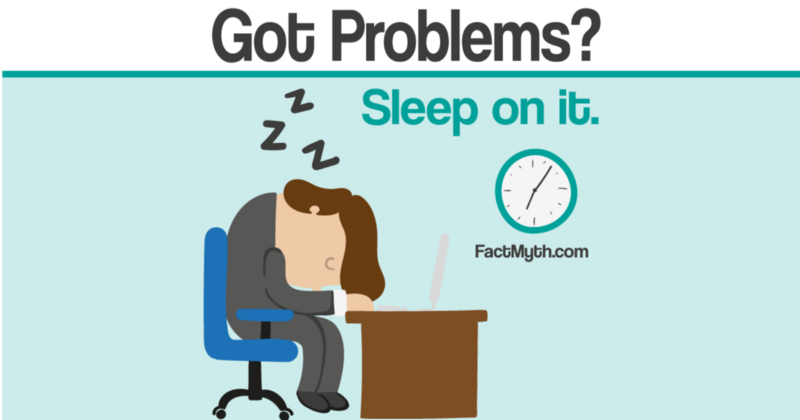The latest on all kinds of information, news, and resources that help you make working remotely better.

Office design can influence how much productive work you get done in a day. If you regularly find yourself listlessly staring at your work, you may want to consider whether the following environmental factors and work space design choices are holding you back from your full potential:
1. The Stale Office Air You Breathe
If you work in an office, most of your time is likely spent indoors. The U.S. Environmental Protection Agency estimates that the majority of Americans spend 90 percent of their time indoors. And the air you are breathing in these enclosed spaces could be impairing your cognitive function.
Bringing more fresh air inside, or having a good ventilation system, is linked to better employee performance, according to a 2017 study by researchers at Harvard University, Syracuse University and SUNY Upstate Medical.
2. The Poor Lighting You Endure
Being close to natural sunlight can make or break an employee’s experience. Employees prioritize natural lighting so much that in a 2018 poll by research firm Future Workplace, they picked it as the top office perk over having a cafeteria, a fitness center, or on-site child care.
And no wonder: A lack of natural sunlight can take a physical toll on our bodies, according to a study on 313 office employees led by Alan Hedge, a professor in the Department of Design and Environmental Analysis at Cornell University. Employees exposed to more natural light reported fewer instances of eyestrain and headaches.
3. The Colleagues You Sit With
Office seating plans may not take into account how proximity to certain types of colleagues can influence your work. In a 2016 Harvard Business School study that analyzed the speed and quality of 2,000 workers’ performance at a tech firm, researchers found that sitting within a 25-foot radius of a high performer could positively boost the performance of colleagues by 15 percent.
But bad habits can be contagious, too. The study found that sitting close to a toxic neighbor — defined as someone who was fired — increased nearby employees’ risk of being fired. “Once a toxic person shows up next to you, your risk of becoming toxic yourself has gone up,” said Dylan Minor, one of the authors of the study.
4. The Temperatures Your Colleagues Can’t Agree On
In a CareerBuilder survey of 3,321 employees, 53 percent said they were less productive when it was too cold, and 71 percent said productivity suffered when they were too warm.
Even researchers have different conclusions on the ideal workplace temperature. One 2006 study from researchers at Helsinki University of Technology and the Lawrence Berkeley National Laboratory Environmental Energy Technologies Division found that employees’ productivity peaked at around 71.6 degrees Fahrenheit, while a separate Cornell University study found that a warmer 77 degrees Fahrenheit was the optimal temperature at which workers would make fewer typing errors and produce more work.
5. An Office With No Plants Nearby
Natural greenery in your line of sight is not just good company ―it can also help people concentrate, research on attention restoration theory has found. The theory holds that you can rejuvenate your attention capacity by looking at nature because when we enjoy nature, we are using effortless attention.
Before you even sit down at your desk and get started on the day’s work, there are a multitude of visible and invisible ways your productivity is being affected by your environment. You can probably add a plant to your desk, but you may not be able to switch to a seat with a high-performer nearby or to a desk near natural light. If you notice your workspace environment is less than ideal, speak up about it to your manager or human resources.
You spend more than 2,000 hours a year at work. It is best for everyone to make those hours count for you.
How managers can prevent developer burnout: 10 Tips | Alison DeNisco Rayome, Techrepublic.com

Burnout is a common phenomenon in the tech industry, particularly for developers: Close to 60% of developers report suffering from burnout, according to Blind, for reasons including poor leadership and unclear direction, work overload, and toxic work cultures.
Here are 10 ways that managers can help prevent their developers from burning out.
1. Allow remote work and flexible scheduling
Particularly in areas where most workers have a long commute, allowing at least part-time work from home can make a huge difference in reducing stress and burnout. If possible, no meetings should be scheduled on work from home days, to allow developers time to focus on their work, said Cristian Rennella, CTO and co-founder of elMejorTrato.com.
Flexible scheduling can also reduce stress, said Paul Wallenberg, senior manager of technology services at LaSalle Network. “Can they start earlier and leave earlier, start later and leave later, can they maybe condense their work week and work 10 hour days for four days, or even work remotely and still engage successfully in your standups? If the answer is yes, give them the autonomy to do so and create a schedule that works for them,” Wallenberg said.
2. Encourage vacations
This may require some cajoling, said Mark Runyon, a senior consultant with Improving technology management and consulting firm. “This can seem strange, but as developers we often get so wrapped up our projects and tight delivery deadlines that we feel it’s never a good time to take our much needed PTO,” Runyon said. “It’s essential to get away, clear your mind and relax so you can come back with a fresh perspective. If you always push vacation away for another day, you’ll continue to wear yourself down, and be less effective in your job.”
3. Set realistic deadlines
Some startups take pride in the “let’s be bold” mindset by setting unrealistic deadlines for developers—a sure way to burn out your team, said Flo Defontis, founder and CTO of Air360.
“Even if we all like some adrenaline sometimes, there’s so much one can take,” Defontis said. “For developers who take pride in their work, being forced to write code in a hurry (which usually results in bad code) is just horrible. Especially also because they also share responsibility when something breaks and customers are impacted.”
4. Create a culture of recognition
“What’s worse than having too much work to complete is the lack of appreciation for the work that is done just to keep up with demand,” Shanks said. “Burnout can manifest from a lack of a reward or even just appreciation for their efforts.”
5. Encourage physical activity and wellness
Allowing time for physical activity, even just taking a walk, during the workday can help avoid hitting blocks in coding, Runyon said. A physical break from the computer can help clear a developer’s head and allow them to see new solutions or facets of the problem they are solving, he added.
6. Build variety into the schedule
Managers must create the right combination of business-driven work and more challenging, creative work, said Megan Power, Agile Scrum Master at Salt Lending Holdings. “Working in a business environment means that certain types of more ‘grunt work’ are sometimes unavoidable to meet business objectives,” Power said. “But if a developer is given only this type of work, they are likely to burn out faster than if they have some more challenging and creative work mixed in.”
Developers need to work on new projects over time, rather getting stuck on one with a long timeline, to keep the work feeling exciting and fresh, said Kristen Youngs, co-founder of Coaching No Code Apps.
7. Offer professional development and training
Allowing developers to learn new things beyond their current job can keep their work more interesting, said Clare Watson, operations director at Zolv. “When you work with the same software or language every single day, it can be easy to, eventually, burn out,” Watson said. “Look to learn a new method of accomplishing your current responsibilities. Learning a new coding system, for example, is a great fix for keeping things fresh.”
8. Keep the team balanced
As teams grow over time, their tasks will change, which means managers must constantly reassess and realign talents and responsibilities, Orser said. “If that means new roles open on a team, a manager can modify the way the group is operating, allowing higher performers to take on new responsibility and try leadership roles,” Orser added. “They can then backfill the roles people have outgrown or add in skills and specializations from new hires to fill identified gaps.”
9. Clearly define roles and goals
Clearly defined roles and objectives alleviate stress in that developers are not left uncertain or guessing what their responsibilities are, Cooper said.
While some projects need developers to burn the midnight oil close to a deadline, “as managers, our responsibility is to set clear goals for our team so they can avoid the firedrills which can be 100% prevented,” said Nancy Wang, senior manager of product management at Amazon Web Services (AWS). “Make sure to plan out your sprints and milestones, and give your team enough buffer time in case a Sprint takes longer than it should.”
10. Communicate the business purpose (and in general)
Regular one-on-one meetings between managers and developers can help ensure both receive constant feedback and make changes if needed, Power said. Considering a team member’s input and implementing it where needed will also help them feel more engaged and motivated, she added.
Lacking a support system to talk through ideas or struggles can lead to developer burnout, Youngs said. “Communicating regularly with developers that their work is helpful and appreciated can make a significant difference,” Youngs said. “It helps assure them in their job role and also gives them satisfaction over the work they’ve done. I also like to have a completely open-door policy and ongoing dialogue about any issues with work. It can be a huge relief just to talk through a problem out loud with someone who understands the situation.”
4 Essential Mental Health Tips For Freelance And Remote Workers | Abdullahi Muhammed, Forbes.com

A remote work arrangement often enables you to establish better work/life balance; spend more time with family and reduce the pressure/distractions of working in large open offices. But freelancing also comes with an emotional toll. Stress and on-the-job burnouts are no strangers to the independent worker.
Per recent survey conducted by Epson in the U.K., 48% of freelancers working from home admitted that they find their tenure to be “lonely” at times and 46% claim freelancing is “isolating.” Indeed, freelancing can aggravate your mental health issues unless you invest in establishing healthy routines. Here are four essential tips to help you work in that direction.
1. Learn how to negotiate with yourself
Learn how to negotiate with that critic sitting inside you. Get better at creating more realistic daily to do lists; celebrate your accomplishments every day and practice gratitude. Cognitive scientists say that people who regularly do the “three good things” exercise — name three good moments or things that happened during the day — witness considerable improvements in mental health and overall happiness. So give it a try as well!
2. Socialize beyond your niche
Socialization and networking are often prescribed as the best recipe for dealing with the “lonely freelancer” syndrome. “Regularly interacting with other people is utterly important for those working solo,” said Cynthia Telles, Director, UCLA Hispanic Neuropsychiatric Center of Excellence. “However, despite the common line of advice, freelancers should stop seeking company of other freelancers. When the people you see the most experience the same woes and deal with the same anxieties, you can find yourself trapped into a feedback loop of pressure and stress, aggravated by the experience of your peers.”
3. Budget for more expensive forms of self-care
Investing in better things for yourself — a more comfortable chair, a better laptop, warmer socks — means investing in your business. The better you feel on a daily basis, the more motivated you are to do the work and earn more money.
4. Learn how to handle rejection
Fear of rejection and criticism is one of the common issues holding people back from becoming freelancers. Working for yourself means that every negative comment will land right in front of you. A lot choose gig or freelancing work as a better way to channel their passion for design, writing or coding. And that’s why rejection and criticism for freelancers often feels more personal than for corporate employees.
Beverly Flaxington suggests trying the following techniques:
- Practice reframing. Change the narrative from, “I’m talentless, no one will hire me!” to a more positive statement, “Finding the first freelance job is hard for everyone. I’m no different.”
- Channel your self-confidence. Make a daily list of things that you’ve done well. Regularly review your achievement and celebrate them.
But here’s some good news as well: learning how to deal with rejection strengthens your mental health. A stronger mental health means that you can resist other daily downers and remain productive and contemporary with your line of work.
How to Make Money Working from Home in 2019 | Brian O’Connell, Thestreet.com

With the advent of digital technology, it’s relatively simple to not just make extra cash working at home, but make a good chunk of money doing so.
Plus, there’s no commute, you’re your own boss, and nobody is calling you into a snooze-inducing two-hour meeting where nothing is resolved and no action taken.
Who needs that when you can set up shop in the comfort of your own home and make a decent amount of cash in the process?
Intrigued? Ok – let’s get your work-at-home campaign started with a full menu of great ways to earn money at home, where you’re the CEO, and where corporate America can’t bother you.
Great Ways to Make Money from Home
1. Start With Work-at-Home Job Sites
Zip Recruiter and Flex Jobs are great places to start. Pop in your areas of specialty and both sites will send you job opening alerts when they arise.
2. Handle Data Entry or Bookkeeping Online
You really don’t need a degree in accounting to handle basic office tasks like data entry, payroll or bookkeeping. Just study up online and leverage your digital skills to full advantage. Good digital office help can easily earn $25 or more per hour.
3. Be a Good Neighbor
You can earn good money by accepting shipments from delivery companies like Fed Ex (FDX – Get Report) , UPS (UPS – Get Report) , and the U.S. Post Office for your neighbors, who may be at work or traveling. Just sign up at the site and start accepting your neighbor’s packages – at your house. You can earn about $3.50 for each delivery.
4. Drive Your Car
Sign up with ride-sharing sites like Uber and Lyft and make hundreds of dollars per week, driving folks around on your schedule. It’s not uncommon for drivers to make more than $500 per week on ride-sharing drives. If you’re comfortable behind the wheel, this gig could be for you.
5. Rent Out Your Home
That’s the idea behind home rentals like Airbnb.com, which enable homeowners to rent out their properties to travelers for a night or more. You’ll need to provide basic amenities, like towels and sheets, and must respond to potential renters within 24 hours. Airbnb hosts who rent out their homes regularly can make up to $30,000 annually.
6. Be a Babysitter
If you love children and have the time, you can open up your home as a babysitting service. Child care sites like Care.com and SitterCity will hire you (after you pass a background check.) The pay is good, depending on your experience – experienced baby sitters can make over $25 per hour.
7. Be a Virtual Assistant
Experienced virtual assistants can earn well over $50 per-hour, and can often set their own schedules. Sites like TaskRabbit can help you find virtual assistant gigs.
8. Be a Professional Tutor
Do you specialize in a particular academic category, like math, science or writing? Put that knowledge to work as an at-home (or online) tutor. The best path is to be certified by the National Tutoring Association. Once you do that, you can take training sessions, search jobs, and swap tips and educational strategies with other professional tutors.
9. Participate in Surveys
There’s a growing demand for professional survey takers, and there’s decent money in doing so. Professional survey sites like Swagbucks, Paid Surveys or Survey Junkie and earn up to $250 per month, or earn survey swag like gift cards and new products just for participating in free-to-take surveys.
10. Be a Web Site Reviewer
You don’t need any professional certification to do so – just be computer efficient, be diligent, take instructions well, and be good at writing up your thoughts on a given web site. Plenty of Fortune 500 companies partner with UserTesting, and regular web site reviewers can make up to $30 per hour.
11. Be a Freelance Writer
Sites like Freelance Success, Indeed.com, Contena, and LinkedIn regularly cater to freelance writers, offering job leads, advice, and even access to editors and content providers who hire freelance writers. Good freelance writers can earn over $100,000 annually if they specialize, and market their abilities to the right clients. Sites like Upwork and Guru.com also offer job leads, but the pay is often poor and you’re competing with loads of other writers for the best gigs.
12. Work With Focus Groups
Sites like Harris Poll Online, 2020 Panel, Brand Institute, and Engage will pay you cash or gift cards for an hour or two of your time participating in a focus group. You’ll study a product or a service, answer specific questions, and partner with focus group companies on market research campaigns.
13. Be a Digital Travel Agent
If you have the gift of passport wanderlust and know your way around an airline and hotel itinerary, becoming an online travel agent can be a profitable pastime. You’ll be working with excited clients who are passionate about their travel. Get started by partnering with travel agent hosting companies like the Airlines Reporting Corporation or the International Airlines Travel Agents Network, where you can get access to gigs, learn the craft, and earn hefty commissions helping people set up their travel plans.
14. Channel Your Inner Pet Sitter
Pet sitters are in high demand, as families who travel and business professionals who work late hours need someone to walk, fee and otherwise take care of their pets. Sites like Care.com, Rover and DogVacay can get you started. Before you know it, you can be making $20 or more hour for taking care of Fido.
15. Rent Your Vehicle
Sites like RelayRides, Turo and GetAround will advertise your vehicle to potential renters (you’ll need to keep your auto in pristine condition) and you can earn about 65% of the total ride cost by renting out your vehicle. Or, you can rent your vehicle out to Uber drivers at HyreCar and earn up to $12,000 annually for doing so, according to the company’s web site.
 A webinar is a presentation where a host shares information with an audience. The information can be anything, so long as it educates your audience by giving them new and exciting information, or provides value to them via information that may be much harder to understand without the host. According to a study by the Content Marketing Institute,
A webinar is a presentation where a host shares information with an audience. The information can be anything, so long as it educates your audience by giving them new and exciting information, or provides value to them via information that may be much harder to understand without the host. According to a study by the Content Marketing Institute, 
















 Always aim for high-quality results for high-importance tasks. It’s that simple!
Always aim for high-quality results for high-importance tasks. It’s that simple!

